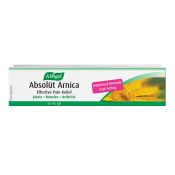What exactly are tennis and golf elbow?
These simple terms reflect injuries more formally known as lateral epicondylitis and medial epicondylitis respectively. At the elbow joint, certain bony prominences are quite easy to find as you can feel them sticking in towards the body like the medial epicondyle or away from the body, like the lateral epicondyle.
The -itis should serve as a clue for the inflammatory nature of these conditions, specifically inflammation of the tissues around these bony points of the elbow.
What causes these conditions?
These two bony points serve as the attachment site of the tendons connecting to the muscles of the forearm. Epicondylitis most commonly occurs as a strain injury, a stretching or tearing of the tendon fibers due to overuse of the tissue or overloading the muscles.
What are the symptoms?
Overuse injuries are typically accompanied by chronic pain ranging from mild to severe that leaves the tissue sensitive to touch. There may also be typical signs of inflammation such as swelling and redness. It's important to take note of any lightning like sensations or even a loss of sensation as swollen tissues may compress vessels or nerves in the arm.
I heard that I should apply heat to the area as soon as the injury occurs?
This advice could be considered for a chronic injury, but acute injuries require something different:
• Acute – in the first hours of the injury up to approximately day six, cold should be applied to the area to prevent swelling by causing the blood vessels to shrink. This has the added benefit of making the vessels tighter, preventing fluid from leaking from within the vessel and into the damaged and inflamed tissue. Wrap the cold application in a towel to prevent it from coming into direct contact with the skin and leave it on the injury site for 20 minutes at various points throughout the day.
• Sub-acute – injuries transition into this stage at the end of the first week and are considered sub-acute until week six. Alternating between hot to open the vessels and increase blood flow to the area followed by cold to flush away the toxins that have built up can help heal the injury site.
• Chronic – these types of injuries are common with epicondylitis because athletes or hobbyists may not realize the extent of the damage being done to their tissue and play through the minor irritation. At this point, it is useful to apply heat to increase blood flow as discussed.
Are there any ways to prevent these conditions from occurring in the first place?
Recovering from this injury can take many months, requiring a multi-faceted approach to heal the tissues. While the research on tools such as compression braces is far from settled, they are a tool with no known harms and could provide relief.
In a group of 52 individuals with lateral epicondylitis, the use of orthotic straps resulted in an increase of pain-free grip strength. Theories for how they provide such relief range from warming the tissue underneath and therefore increasing blood flow to affecting the transmission of pain signals through the nerves.
Elbow taping also resulted in improvements in pain-free grip strength by 24% and a non-significant improvement in pressure pain threshold of 19%, although the study was small and therefore warrants further efforts.
It can be beneficial to work with a physiotherapist to exercise the wrist muscles and ensure a speedy recovery. This exercise regime could include motions such as a wrist turn or lift, an elbow bend, or a fist squeeze to strengthen grip amongst others.
While working through these exercises is critical, it's also important to perform functional movements such as those in your day to day life like lifting a mug or grasping and turning a handle. These functional movements engage muscles in a different way from their use in competitions.
I know the focus should be on prevention, but if I'm injured, are there ways to relieve my current symptoms?
Two herbs are going to quickly become your friend in a situation such as this.
The first is known as Arnica montana, an herb common to Europe, Siberia, and northwestern United States.
This has historically been used for controlling inflammation and stimulating the circulation of blood in the area of application. This is important for those with joint pain as controlling inflammatory agents can be key to containing the pain, especially if applied topically before bedtime when used as a gel, such as products like Absolüt Arnica.
The other herb is Harpagophytum procumbens, otherwise known as Devil's Claw, a species native to South Africa. The harpagosides, the active constituent of the plant also acts as an anti-inflammatory and can be taken internally in conjunction with a topical application of Arnica.
Products such as Joint Pain Relief tablets can provide this benefit, but the European Medicines Agency notes that it could take 2-3 months to notice significant benefits as the harpagosides accumulate in the tissues of the body with patients noticing decreased pain and increased joint mobility.
References
http://www.ema.europa.eu/docs/en_GB/document_library/Herbal_-_HMPC_assessment_report/2013/08/WC500148261.pdf
https://www.ema.europa.eu/en/documents/herbal-monograph/draft-european-union-herbal-monograph-harpagophytum-procumbens-dc/harpagophytum-zeheyri-decne-radix_en.pdf
https://www.ncbi.nlm.nih.gov/pmc/articles/PMC3445177/
https://www.ncbi.nlm.nih.gov/pubmed/12918865
https://www.ncbi.nlm.nih.gov/pubmed/19487823
https://www.ncbi.nlm.nih.gov/pubmed/24405258
https://www.ncbi.nlm.nih.gov/pubmed/27622145





